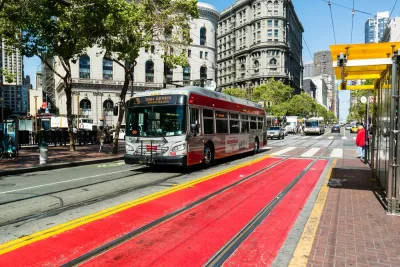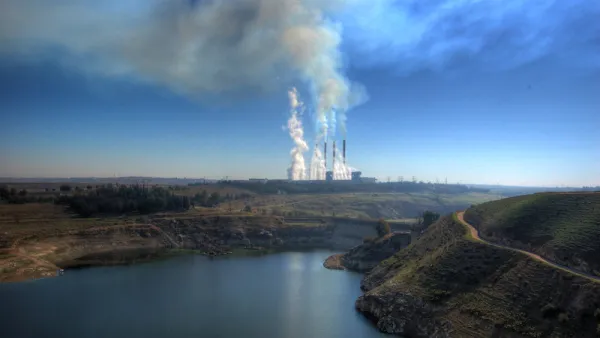The U.S. Environmental Protection Agency wants to force the state of California to spend highway money on public transit, because of the environment.

The Trump administration seems to love to antagonize California, mostly by revoking or weakening environmental regulations, like the recent episode of President Trump announcing via Twitter that California would no longer have a Clean Air Act waiver to require higher emission standards from car companies. Since the beginning of the Trump administration, the state of California has responded to the president's agenda with lawsuit after lawsuit. California also sued to keep its Clean Air Act waiver.
In recent weeks, however, the dynamic has changed, and the Trump administration has begun antagonizing California with threats of environmental enforcement. First, President Trump threatened to punish California with an environmental violation if it didn't take aggressive action to curb homelessness. Late in the day on October 2, the Trump administration followed through on that threat, as reported by Kurtis Alexander and Dominic Fracassa.
More recently, the Trump administration threatened to force the state to spend money intended for highways on public transit instead.
"The Environmental Protection Agency on September 23 threatened to start enforcing long-dormant Clean Air Act provisions that would force many regions in California to stop building new highway projects and instead either transfer that money to mass transit projects or else lose it entirely," reports Jeff Davis.
Davis notes the weirdness of the whole situation: "This sounds like a headline that would have occurred in the Obama Administration during its more ambitious first term, but no, this was in fact the Trump Administration."
The threat is predicated on the letter of the Clean Air Act law, as described clearly by Davis. The letter of the law also means the state wouldn't entirely lose the money, but could be forced to spend it on transit instead of roads.
FULL STORY: EPA Threatens to Make California Transfer Highway Funding to Mass Transit Projects

National Parks Layoffs Will Cause Communities to Lose Billions
Thousands of essential park workers were laid off this week, just before the busy spring break season.

Retro-silient?: America’s First “Eco-burb,” The Woodlands Turns 50
A master-planned community north of Houston offers lessons on green infrastructure and resilient design, but falls short of its founder’s lofty affordability and walkability goals.

Delivering for America Plan Will Downgrade Mail Service in at Least 49.5 Percent of Zip Codes
Republican and Democrat lawmakers criticize the plan for its disproportionate negative impact on rural communities.

Test News Post 1
This is a summary

Test News Headline 46
Test for the image on the front page.

Balancing Bombs and Butterflies: How the National Guard Protects a Rare Species
The National Guard at Fort Indiantown Gap uses GIS technology and land management strategies to balance military training with conservation efforts, ensuring the survival of the rare eastern regal fritillary butterfly.
Urban Design for Planners 1: Software Tools
This six-course series explores essential urban design concepts using open source software and equips planners with the tools they need to participate fully in the urban design process.
Planning for Universal Design
Learn the tools for implementing Universal Design in planning regulations.
EMC Planning Group, Inc.
Planetizen
Planetizen
Mpact (formerly Rail~Volution)
Great Falls Development Authority, Inc.
HUDs Office of Policy Development and Research
NYU Wagner Graduate School of Public Service





























